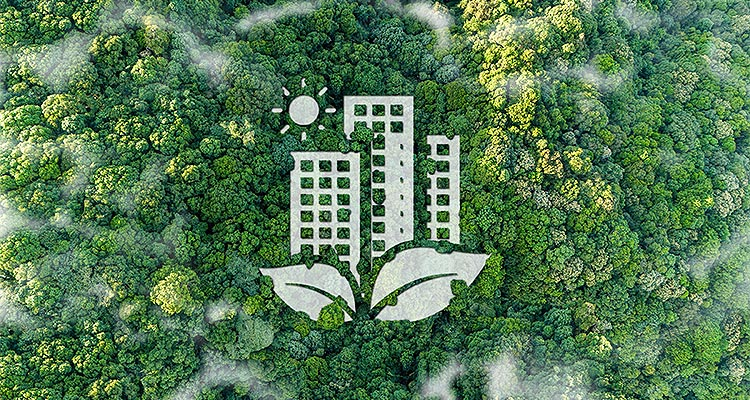
The path to Net Zero is not possible without the construction sector.
Prioritising sustainability in construction has quickly moved from a nice-to-have to a necessity for the planet’s future. Having just witnessed some of the hottest years on record and continued weather-related catastrophes, the urgency to act across every sector is greater than ever.
As for construction, over a third of global energy consumption comes from buildings, making the built environment one of the key elements in the climate fight. Many leaders are already seeing the potential – transforming the construction of their buildings from a burden on the balance sheet to a strategic process that can not only contribute to net- zero goals but save money along the way.

So, how can construction companies help on this path to a net-zero future? The answer is smarter, decarbonised buildings.
The creation of smart buildings
The good news is that the technology exists today to make a real impact. We need to consider smart technology from the design and implementation stages of a building. Smart technology utilised early in the construction process can help deliver commissioning and energy spend benefits – which can reduce physical installation and cost.
From the design perspective we want to avoid overly specified plant systems that result in a lower coefficient of performance, so using a centralised plant twin that models the demand enables the comparison of different options and selection of the right design with the highest efficiency.
Adding in a digital commissioning phase from construction can reduce snagging issues with the control and operation of the building and enables the reduction of energy in the construction phase. The results of having a digital building where fault detection and equipment performance automation are already deployed can significantly reduce day two delays for client operations.
Once this has been implemented from the beginning of the construction process and integrated into every aspect of a building, it can leverage information from various connected systems in a facility such as HVAC, lighting, and security and provide data-driven insights regarding energy efficiency, emissions, or air quality, for example. This data can then be shared across multiple operational technology (OT) and information technology (IT) systems, ensuring that energy use is optimised in real time across the built environment.
The role of construction companies is to support the creation of smart buildings with the right infrastructure. By ensuring that the green basics are correct, businesses and tenants can save money in the future, demonstrating that climate action can unlock capital for other vital investments.
 The magic trifecta
The magic trifecta
We have the opportunity to knock down the global emissions that come from buildings with a trifecta of efficiency, electrification and digitalisation. Constructing buildings that engage with smart tech from the get-go will see a more efficient process, seeing greater efficiencies, safety, lower costs and in some cases, even enhancements in property values..
For example, Powerhouse Brattørkaia, the most energy-positive building in the northern hemisphere, generates more energy than it will ever consume in its lifetime. All building systems are tracked on a digital dashboard that displays details on occupancy, comfort and sustainability KPIs in given building zones. Producing 485,000 kWh annually, it supplies renewable energy to itself and neighbouring buildings and vehicles, including electric buses, cars and boats, through a local microgrid. It even creates enough excess electricity to charge 200 electric vehicles. State-of-the-art building management solutions continue to set new standards for both cost savings and energy efficiency and should be considered when drawing up construction plans in the first instance.
The future of construction is sustainable
When organisations look to create a more sustainable built environment, businesses can benefit as well as the planet.
With sustainable construction backed by circularity and smart monitoring, leaders will be able to minimise energy consumption and material waste, therefore reducing cost. In fact, the ROI on more sustainable building practices could be a key differentiator for construction companies that invest in greener strategies. As well as cost reductions, business continuity and energy security can be achieved through this move to more sustainable construction and building practices.
Overall, there’s no need to delay strong climate action, driven and supported by upgrades, electrification, and digitalisation. And when the construction sector buys into the benefits of sustainability, the global emissions of buildings will be reduced for good.
By David Lloyd
For a list of the sources used in this article, please contact the editor.
David Lloyd is Head of Connected Energy Performance at Johnson Controls. As the global leader in smart, healthy and sustainable buildings, Johnson Controls’ mission is to reimagine the performance of buildings to serve people, places and the planet. Building on a proud history of nearly 140 years of innovation, it delivers the blueprint of the future for industries such as healthcare, schools, data centres, airports, stadiums, manufacturing and beyond through OpenBlue, its comprehensive digital offering.
 The magic trifecta
The magic trifecta